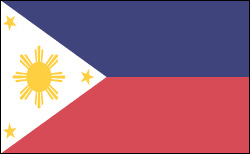Philippines History


An Independent Nation: Not Without Corruption
The Philippines achieved full independence on July 4, 1946. Manuel A. Roxas y Acuña was elected its first president, succeeded by Elpidio Quirino (1948–1953), Ramón Magsaysay (1953–1957), Carlos P. García (1957–1961), Diosdado Macapagal (1961–1965), and Ferdinand E. Marcos (1965–1986).
Under Marcos, civil unrest broke out in opposition to the leader's despotic rule. Martial law was declared on Sept. 21, 1972, and Marcos proclaimed a new constitution that ensured his role as president. Martial law was officially lifted on Jan. 17, 1981, but Marcos and his wife, Imelda, retained broad powers.
In an attempt to resecure American support, Marcos set presidential elections for Feb. 7, 1986. With the support of the Catholic Church, Corazon Aquino declared her candidacy. Marcos was declared the official winner, but independent observers reported widespread election fraud and vote rigging. Anti-Marcos protests exploded in Manila, Defense Minister Juan Enrile and Lt. Gen. Fidel Ramos defected to the opposition, and Marcos lost virtually all support; he was forced to flee and entered the U.S. on Feb. 25, 1986.







